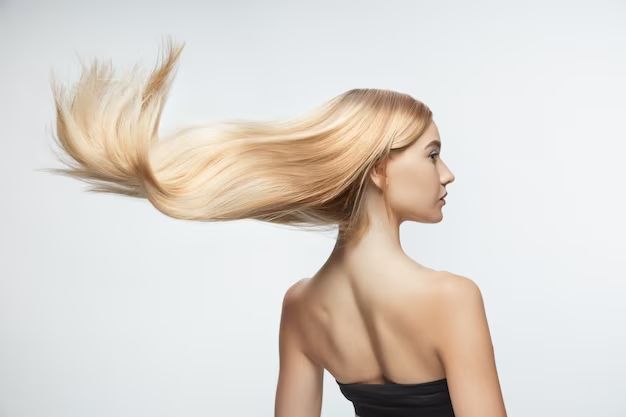What Does Accent Mean in Hair?
Accent refers to strands of hair that are different in color from the base or natural hair color. Accent colors provide dimension, visual interest, and highlights to hairstyles. They can be achieved through highlighting or lowlighting techniques that lighten or darken select pieces of hair.
Types of Accent Colors
There are several different types of accent colors that can be added to hair:
– Highlights: Strands that are lighter than the natural base color. Highlights create brightness and dimension. They can be fine highlights blended throughout the hair or thicker chunky highlights.
– Lowlights: Strands that are darker than the base color. Lowlights add depth and shadow. They are often used to break up lighter highlights.
– Balayage: Hand-painted highlights that look natural and subtle. The color is swept or feathered onto sections of the hair.
– Ombre: Hair that is darker at the roots and gradually lightens towards the ends. It provides a soft, blended look.
– Sombre: A more subtle version of ombre with color that fades seamlessly into the ends.
– Babylights: Ultra-fine, micro highlights placed throughout the hair to lighten it subtly.
– Color Melt: Seamlessly blends together a mix of highlights and lowlights. Achieves a multi-tonal melted effect.
Choosing Accent Colors
When selecting accent colors for the hair, it is important to consider:
– Skin tone: Cool skin tones look best with ash and beige blondes. Warm skin tones suit honey, caramel and golden blondes.
– Eye color: Blue or green eyes pop with coppery shades. Brown eyes suit a range of shades like caramel, auburn and burgundy.
– Current hair color: The accent color should complement the base shade and not clash. Stay within 1-2 shades lighter or darker.
– Natural hair color: Factor in how the accent color will blend with regrowth. Opt for shades that will grow out naturally.
– Lifestyle: Highlights require more maintenance. If you have an active lifestyle, opt for lowlights or balayage.
– Workplace: Make sure accent colors align with any dress code restrictions. Keep it subtle for conservative offices.
Accent Color Placement
Where accent colors are placed in the hair also impacts the overall look:
– Throughout hair: Fine highlights or babylights blended from roots to ends give hair a sun-kissed glow.
– Top and sides: Brightens and opens up the face. Good for rectangle or square face shapes.
– Underneath sections: Subtle and masks greys. The accent color won’t be too obvious.
– Framing the face: Strategically placed around the hairline and sides of the face to illuminate features.
– Ends only: Ombre and sombre concentrate color on the mid lengths to ends only. Leaves roots dark.
– Pieces in front: A few thick chunks of highlights around the face make a statement.
Accent Color Techniques
There are several techniques hair colorists use to create different accent effects:
– Foils: Thin strips of foil are used to isolate strands and apply lightener or hair color. Allows precise placement.
– Balayage: The lightener or color is hand-painted directly on sections of the hair without foils. Looks natural.
– Cap highlights: A cap with holes is placed on the head. Strands pulled through the holes are colored. Subtle result.
– Teasing: Hair is tightly teased before applying color to the ridges. Gives texture and dimension.
– Splashlights: Color is painted, splattered or sponged onto the hair for a bold, irregular pattern.
– Babylights: Using fine needles or applicator tips, tiny dots of lightener are deposited across the hair.
– Brick Laying: Thin slices of hair are woven at diagonal angles before applying color. Mimics natural highlights.
Maintenance for Accent Hair
To keep accent hair looking vibrant and fresh, the following maintenance is required:
– Touch up roots every 4-6 weeks. Let regrowth come in before coloring just the new growth.
– Use color-safe shampoos and conditioners to keep color locked in. Wash with cool water.
– Deep condition weekly to ensure hair remains moisturized. Avoid over-washing.
– Use heat protectant sprays and limit heat styling to reduce fading.
– Gloss treatments can refresh color between full appointments. Toners cancel unwanted undertones.
– Get a trim every 6-8 weeks to remove dry ends and allow healthy regrowth.
– Gradually transition color back to natural as regrowth increases. Go slowly between appointments.
Benefits of Accent Hair
Adding accent colors to your hair provides many benefits:
– Creates visual interest and dimension. Brings flat or one-dimensional hair to life.
– Provides a youthful, modern look. Accent colors are on trend and stylish.
– Lifts and brightens the complexion. Strategically placed highlights can illuminate the face.
– Covers or blends away greys. Lowlights or babylights subtly mask greying hair.
– Allows you to play with color without full commitment. Just a few highlights provide a pop.
– Gives the impression of fuller, thicker hair. Highlights can add body and volume.
– Offsets or softens prominent facial features. Framing highlights flatter face shape.
– Makes hair more versatile and adaptable to new styles. Adds styling options.
– Immediately updates your look. A quick color refresh revitalizes hair.
Conclusion
Accent colors provide a way to customize your hair and give it dimension. Highlights, lowlights, ombre, sombre and balayage are different techniques for lightening or darkening strands to contrast the base color. Placement can vary from scattered throughout the hair to concentrated around the face or ends. When choosing accent colors, consider your complexion, eye color, lifestyle and workplace environment. Maintain the results through proper hair care and salon visits. Accent colors give hair excitement, brightness and visual appeal.
| Accent Color Technique | Definition |
|---|---|
| Highlights | Strands lighter than base color |
| Lowlights | Strands darker than base color |
| Balayage | Hand-painted highlights |
| Ombre | Dark at roots to light ends |
| Sombre | Subtle ombre |
| Babylights | Tiny, micro highlights |
| Color Melt | Blended highlights and lowlights |


